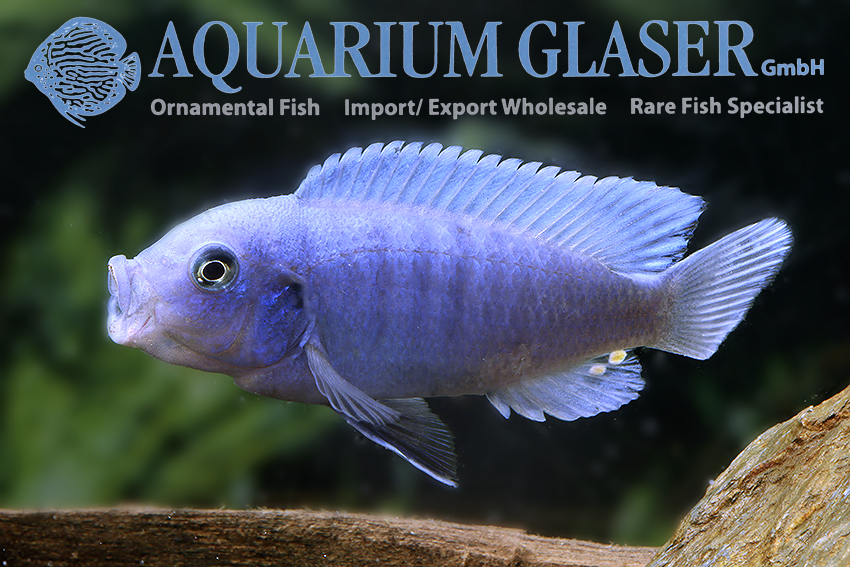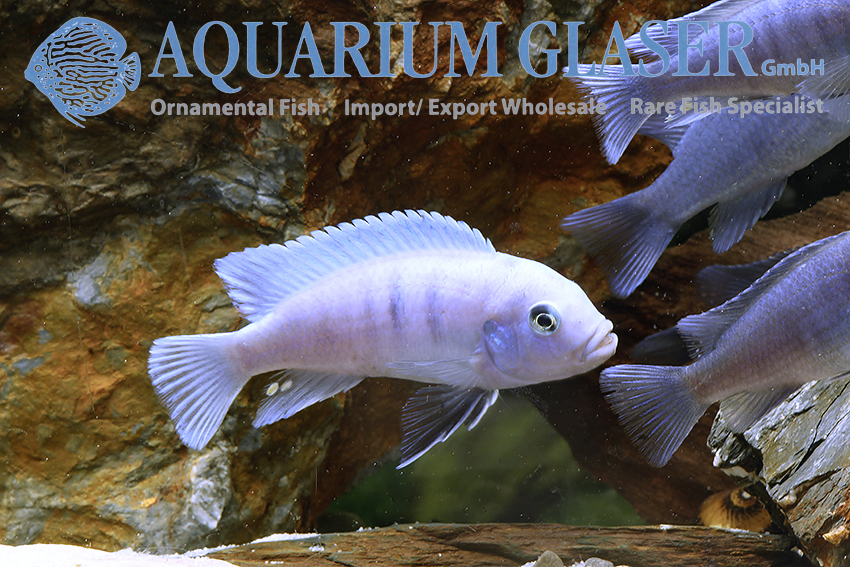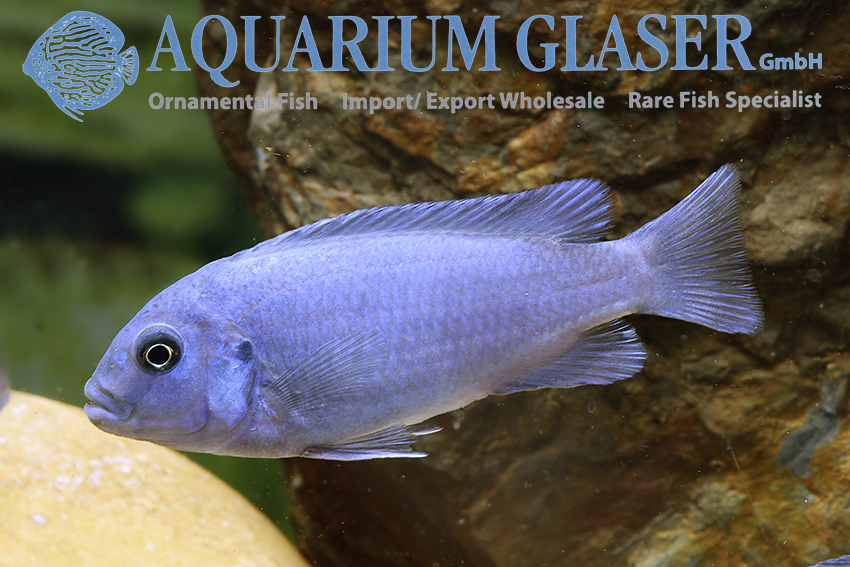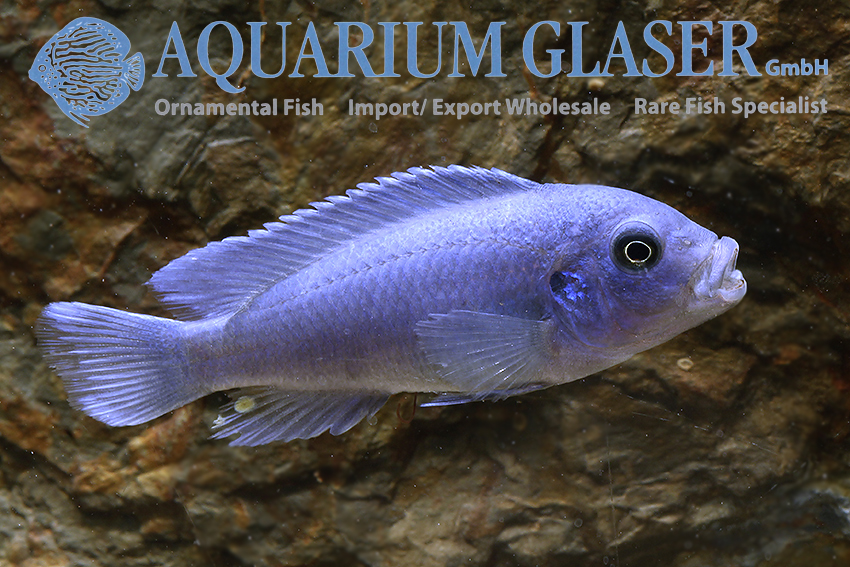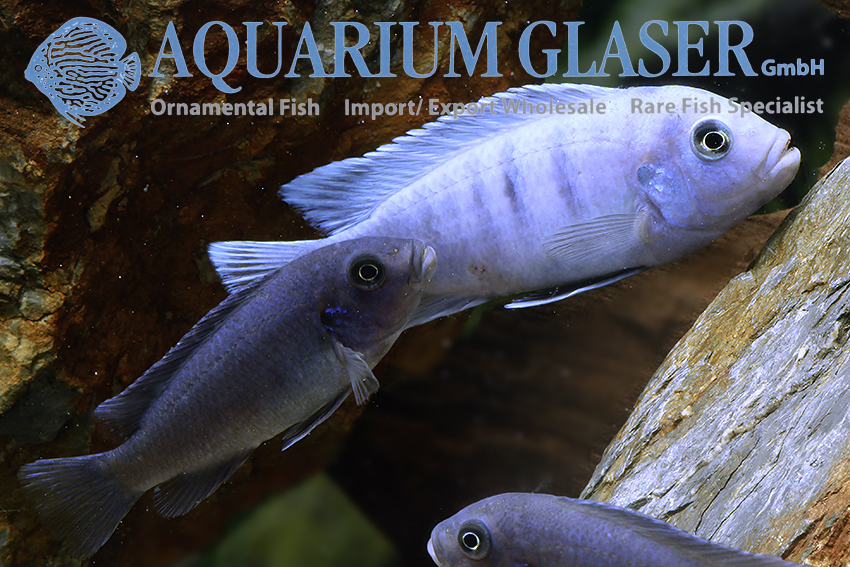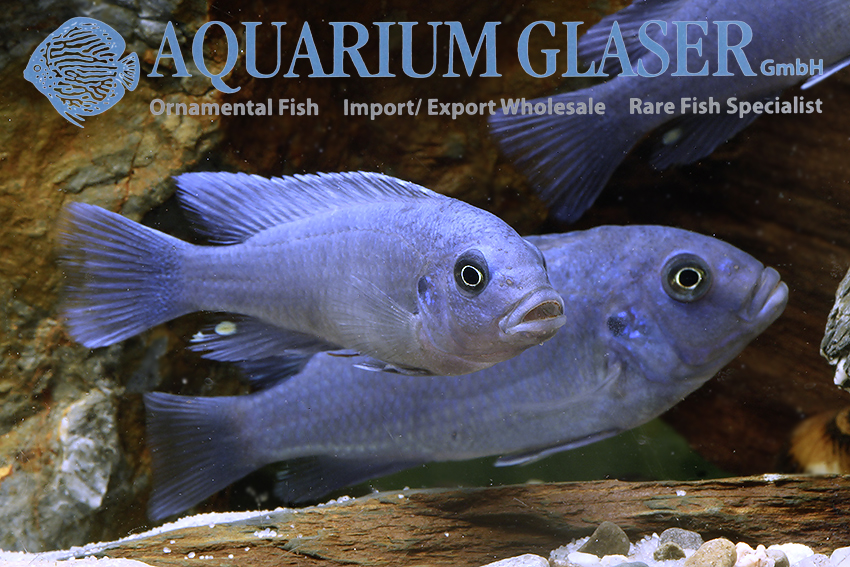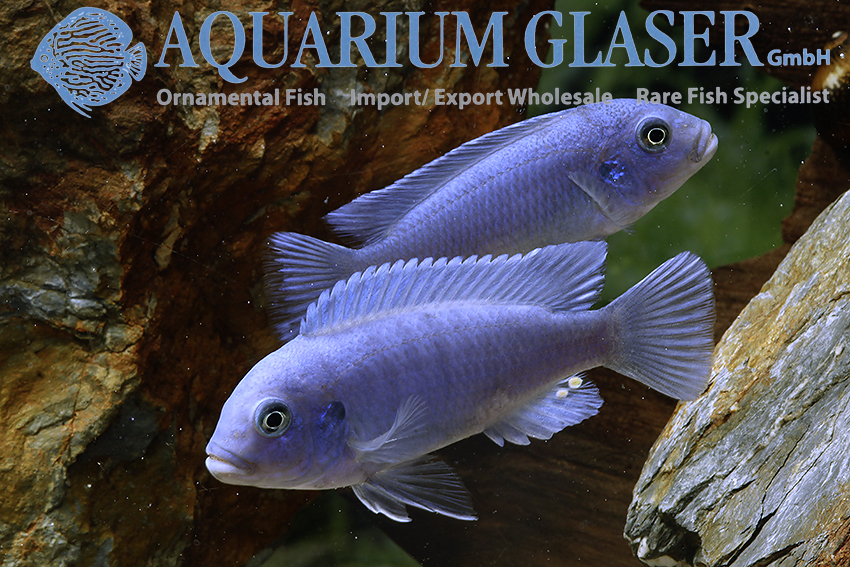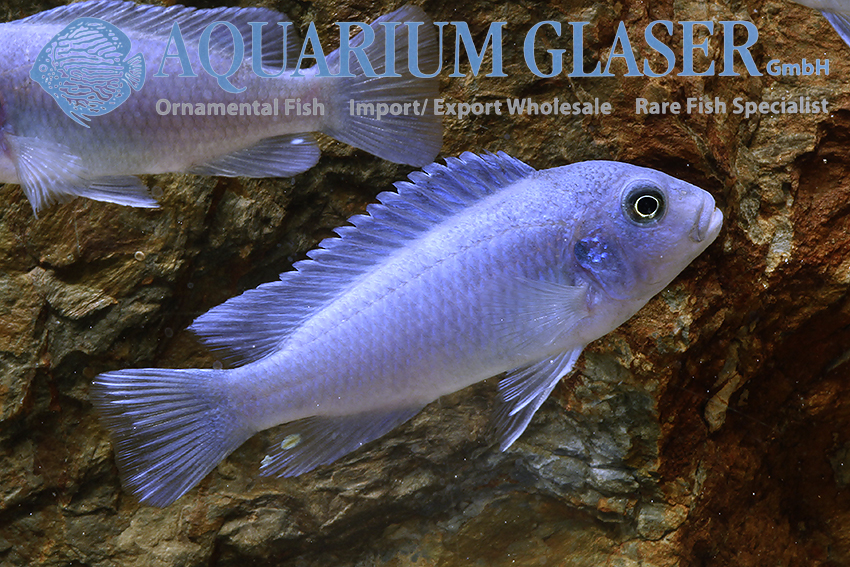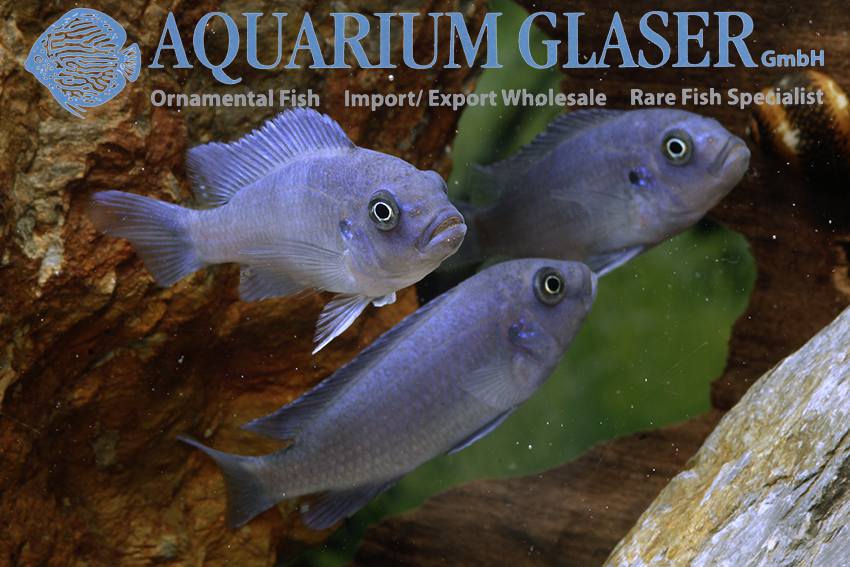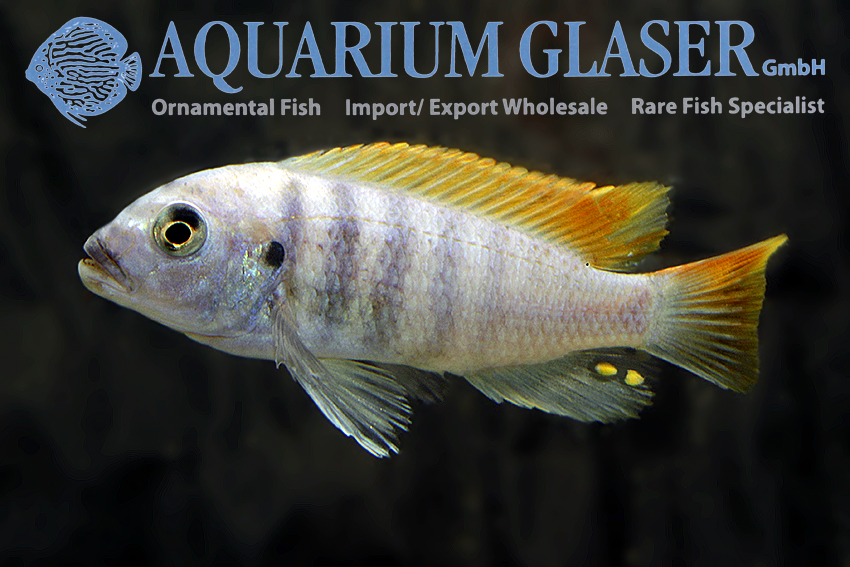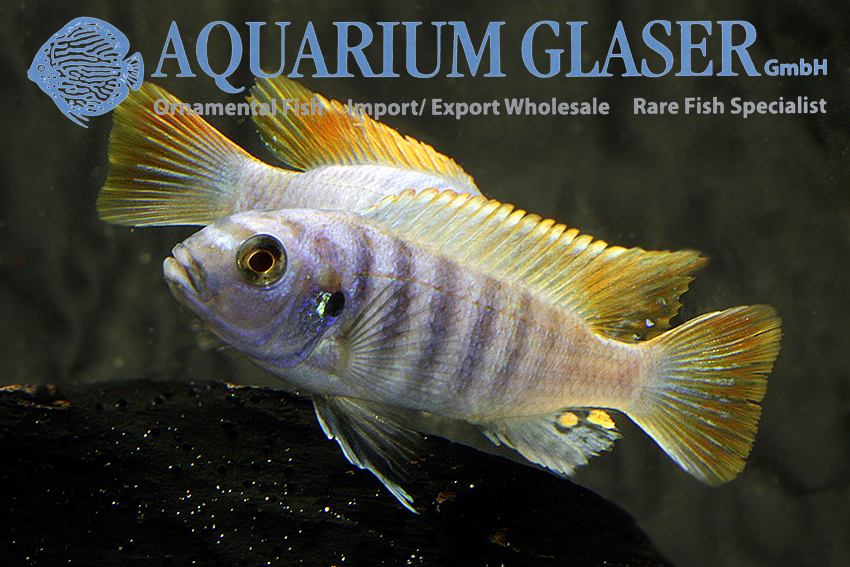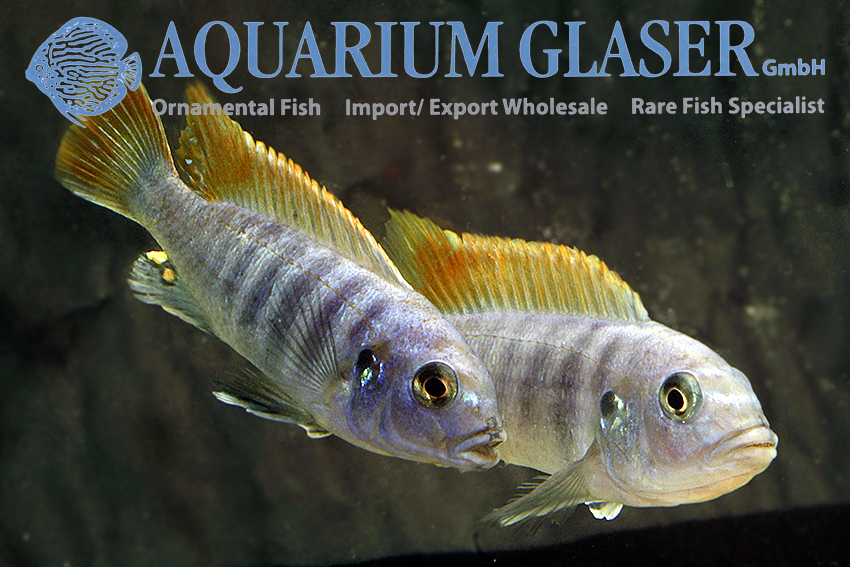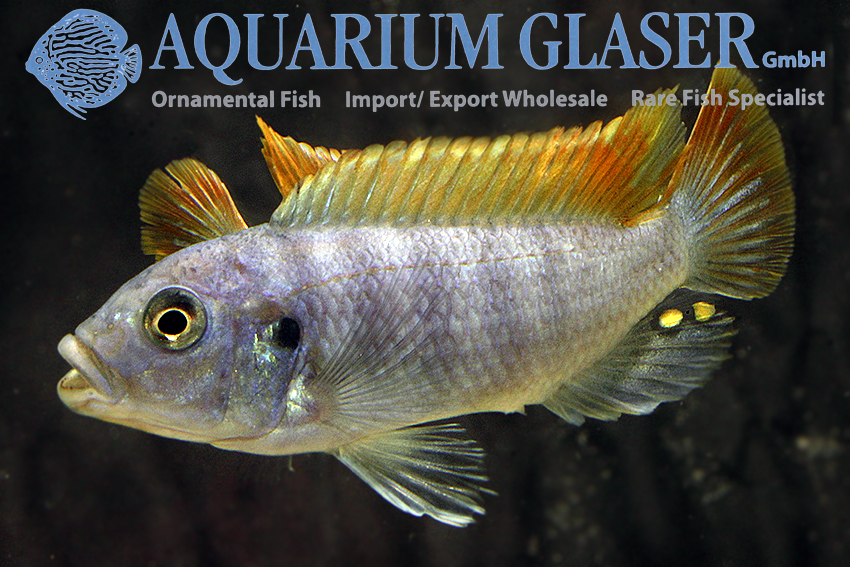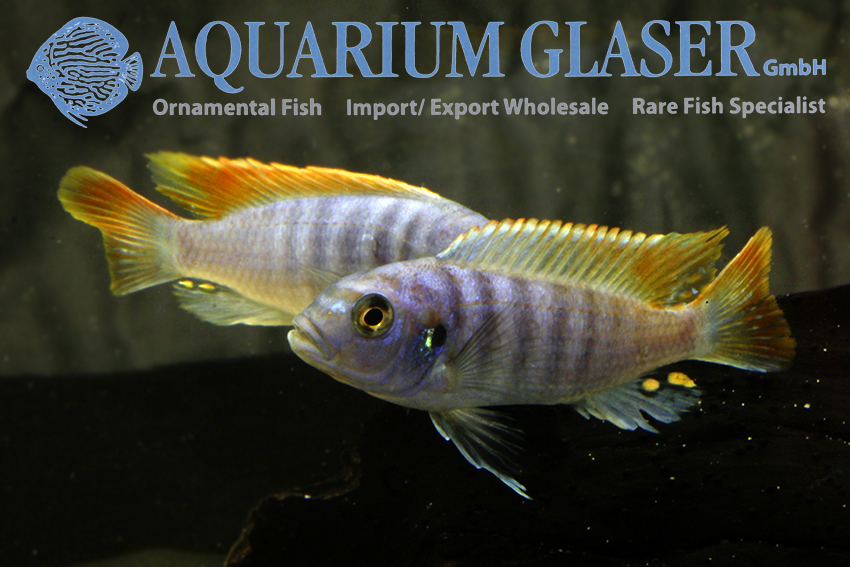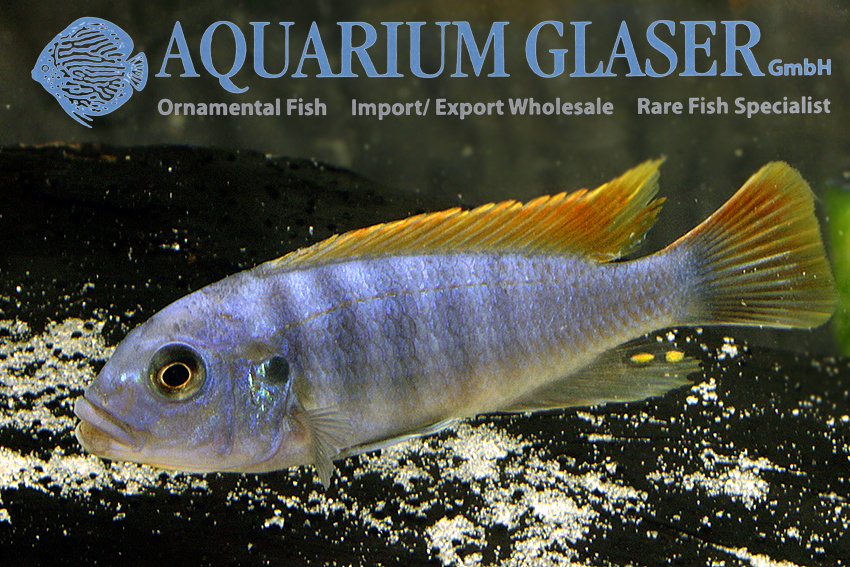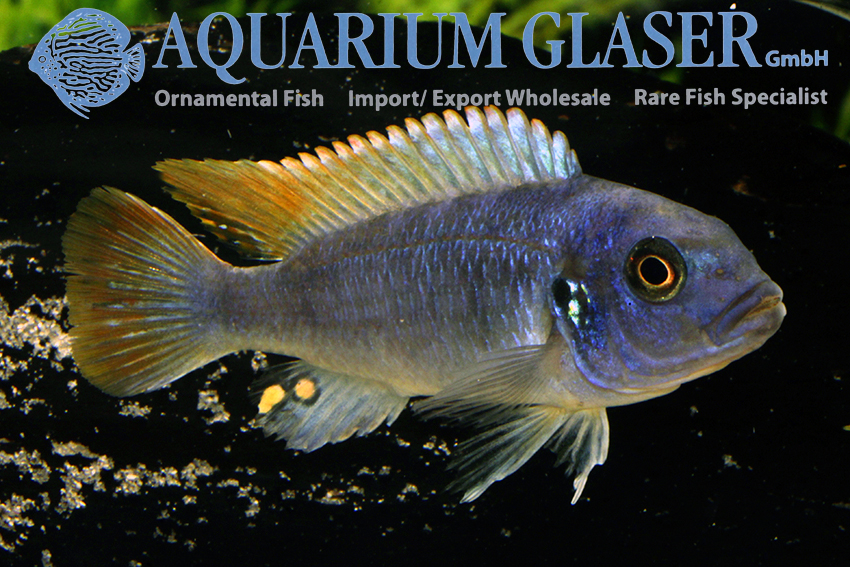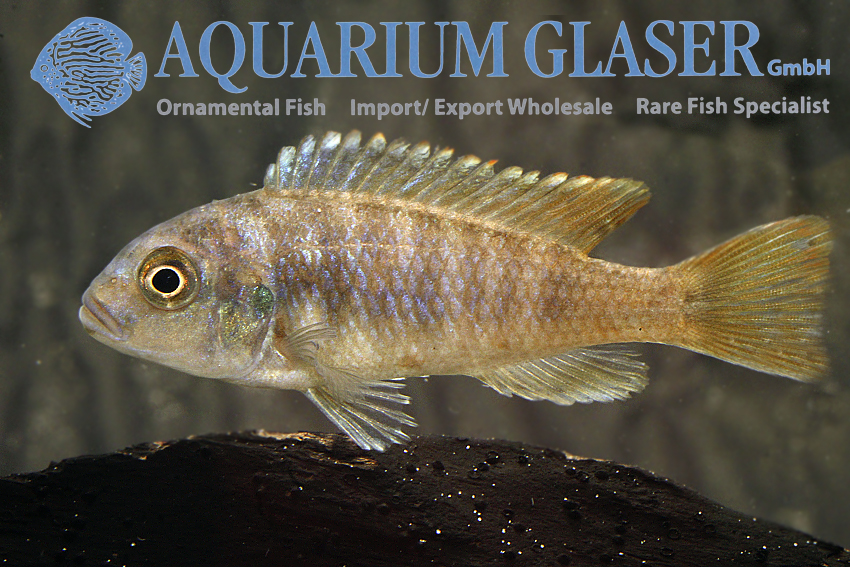The zebra cichlids of Lake Malawi were among the first cichlids to come to us from this great lake in the 1960s. At that time they caused real enthusiasm storms. Aquarists had no idea of the enormous diversity of species and forms that exist there. So the zebras were simply called “Pseudotropheus zebra” after one of the few described species.
Today one knows it better and distinguishes with the zebra cichlids 32 different species, whereby there are also still undescribed ones and all form besides several distinguishable location variants. These zebra cichlids in the narrower sense were also separated from Pseudotropheus and transferred into their own genus, which is called Maylandia. A synonym to Maylandia is Metriaclima, so you can find all Maylandia species in the aquaristic literature also as Metriaclima.
Unfortunately, these species interbreed easily in the aquarium, so unintentional hybrids often occur. The beautiful blue Maylandia we received from Thailand under the name “M. estherae Blue” certainly do not belong to the species M. estherae, but are M. callainos with some M. zebra blood. For all hobbyists who just want to keep beautiful blue Malawi cichlids, Malawi cichlids from Far Eastern breeding are a good choice.
Text & photos: Frank Schäfer





